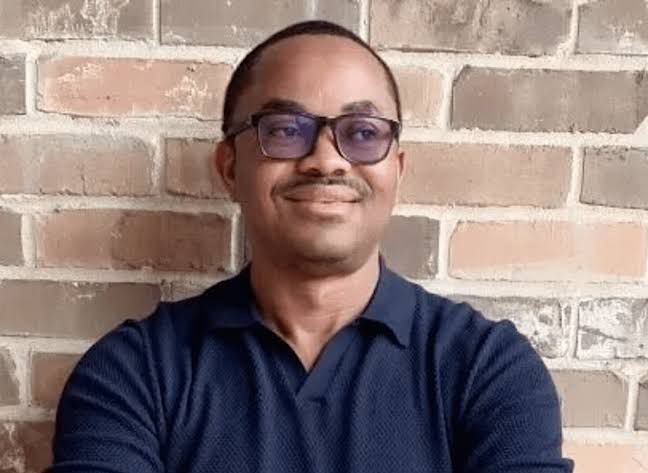When is the time to talk about black against black?, by Osmund Agbo
In this magnificent world we inhabit, the Black man is reminiscent of that child with profound autism, whose mother grows uneasy whenever he throws a tantrum in public. To shield herself from humiliation, she might sequester him in a group home, out of sight and out of mind. Little consideration is given to the possibility that her poor choices during pregnancy may have contributed to his condition. Yet this is not a tale of mothers or of autism. It is neither a lamentation for justice nor a plea for reparations. It is, rather, a story we must tell.
In the early 20th century, in the segregated heart of Tulsa, Oklahoma, there thrived a community that defied every stereotype of incapacity. It was called Greenwood, though history immortalizes it as Black Wall Street. At a time when Jim Crow laws choked every pathway to advancement for freed African Slaves, Greenwood soared. It was an oasis of ambition, dignity, and enterprise.
The district boasted banks, hotels, theaters, law offices, and busy stores owned and operated by African Americans who refused to be defined by oppression. It was said that a dollar circulated within the community thirty-six times before leaving, a level of economic self-sufficiency that seems like a fairy tale today.
Then, in 1921, that success became its undoing. White Mobs, backed by local authorities, descended upon Greenwood in a wave of destruction now known as the Tulsa Race Massacre. Within two days, they razed the district to ashes. Airplanes dropped incendiary bombs on Black businesses and homes. Hundreds perished, thousands were displaced. In the aftermath, no one was prosecuted. Insurance claims were denied. Greenwood wasn’t merely destroyed; it was erased, punished for daring to dream.
That tragedy was not an isolated episode but part of a broader pattern, a deliberate effort to push the narrative that Blacks just can’t do it, that we are not good enough. The same psychology that incinerated Greenwood reverberated across the Atlantic, in Haiti.
When enslaved Africans in the French colony of Saint-Domingue, modern-day Haiti, rose up and crushed Napoleon’s army, they did more than win freedom. They shattered the myth of white supremacy and proved that the oppressed could break their chains. Yet Haiti’s revolution did not remain contained; it ignited a conflagration that spread across Latin America. When Simón Bolívar, the Venezuelan liberator, fled in defeat, Haiti’s President Alexandre Pétion welcomed him, not merely as a guest, but as a comrade in struggle.
Pétion gave him money, weapons, soldiers, ships, and even a printing press to fuel his cause. There was just one condition: wherever Bolívar triumphed, slavery must be abolished. Bolívar agreed and honored this covenant. The indelible mark of Haiti endures on the liberation maps that stretches from Venezuela, Colombia, Ecuador and Peru to Bolivia.
Yet for this moral courage, Haiti was compelled to endure immense suffering. France, humiliated by its defeat, imposed a ruinous indemnity, equating to billions in today’s currency, as the price of freedom. The United States, apprehensive that Haiti’s triumph might inspire its own enslaved population, diplomatically and economically ostracized the nascent nation.
Starved of investment and shackled by debt, Haiti endured over a century of poverty, exploitation, and foreign intervention, including U.S. occupation. Today, it remains the poorest country in the Western Hemisphere. And so the story repeats itself, from Tulsa to Port-au-Prince, from plantations to prisons. The punishment of Black success is an enduring motif.
In contemporary America, statistics reveal that approximately three in four White children reside in two-parent households, compared with two in five Black children. Single-parent households, overwhelmingly led by women, are far more prevalent among Black families. Empirical evidence consistently demonstrates that children raised in stable two-parent homes achieve higher incomes, superior educational outcomes, and diminished risks of poverty or incarceration.
But it wasn’t always this way. A few generations prior, despite segregation and adversity, Black families were among America’s most stable. Marital cohesion was high, communities were tightly knit, and values were anchored in faith, resilience, and mutual support. What changed were not morals but circumstances: a perfect storm of systemic racism, mass incarceration, the war on drugs that disproportionately targeted Black people, and economic displacement that stripped Black men from homes and communities.
Read also:Sixty-Five candles, no light, by Osmund Agbo
The affluent white kid who used powdered cocaine got a slap on the wrist. The impoverished Black kid who smoked crack cocaine faced penalties a hundred times harsher. This sentencing gap led to the mass incarceration of Black men and women, devastating families and communities for generations. What once symbolized resilience now mirrors broken systems. This is not a story of moral failure but of social engineering, a society that lashes its Black child with a thorned whip and then wonders why he cries.
I recount these stories not to dwell in despair but to affirm that Black decline has never stemmed from a paucity of talent or ambition. The ingenuity that built Greenwood and the audacity that birthed Haiti remain undiminished. Yet, perhaps our most insidious adversary today is internalized racism, the subtle venom that turns us against ourselves.
You see, most African immigrants to the United States originate from societies where race is not the primary axis of identity. Class, ethnicity, or religion may carry greater weight. Upon entering America, they confront centuries-old racial hierarchy that quietly relegates Blackness to the lowest tier. Over time, some internalize this hierarchy, perceiving themselves as “different” or, worse, “superior” to African Americans. They embrace pernicious stereotypes portraying Black Americans as indolent or uneducated, reliant on welfare, a manifestation of internalized oppression, the insidious adoption of the oppressor’s worldview.
The contempt of some African immigrants and the resentment it elicits among African Americans both spring from the same poisoned source. One was enslaved; the other colonized. Yet both were conditioned to doubt their humanity. As Malcolm X asserted, the ultimate triumph of oppression is not physical domination but psychological colonization, wherein the oppressed perceive themselves through the lens of their oppressors.
Internalized racism is the quiet annihilator of Black unity, a subtle toxin that converts shared struggle into mutual suspicion. This disunity exacts an economic toll, for wealth, like power, circulates through trust and collaboration. Whereas Jewish communities transformed shared suffering into solidarity, building dense networks of wealth, education, and opportunity, Black communities often fracture along lines of origin, skin tone, or class. Rivalry and distrust corrode the cohesion essential to collective progress.
Thus, when an African immigrant declares, “I am not like those Black Americans,” or when a Black American doubts their own value, both are echoing centuries of racial conditioning.
I write this piece for two reasons. First, this week marks the anniversary of my book Black Grit, White Knuckles: The Philosophy of Black Renaissance, which addresses these very issues. Second, I recently encountered a viral video of a White American “pastor” denouncing Black culture as evil and bestial, words too vile to reproduce. Yet his rhetoric compelled me to ask: what does he mean by “Black culture”? And how, if at all, is it distinct from the broader human cultural heritage?
From the ancient city of Timbuktu to the golden empire of Mansa Musa, from the storied kingdoms of West and South Africa to Arthur Gurley’s Greenwood in America, Black culture, if it can be said to exist apart from the broader tapestry of human achievement, has never been one of shame. Ours is a heritage that built civilizations, exchanged ideas, and envisioned the world in color long before its worth was recognized.
Yet, millions of our children today, navigate a world that treats them as expendable, uncertain of the fate of the warriors and architects who once dominated the ancestral savannas. I recount these stories not from nostalgia, but because you and your children deserve to know.
Osmund Agbo is a medical doctor and author. His works include, Black Grit, White Knuckles: The Philosophy of Black Renaissance and a fiction work titled The Velvet Court: Courtesan Chronicles. His latest works, Pray, Let the Shaman Die and Ma’am, I Do Not Come to You for Love, have just been released. He can be reached@ eagleosmund@yahoo.com
Follow the Neptune Prime channel on WhatsApp:
Do you have breaking news, interview request, opinion, suggestion, or want your event covered? Email us at neptuneprime2233@gmail.com





